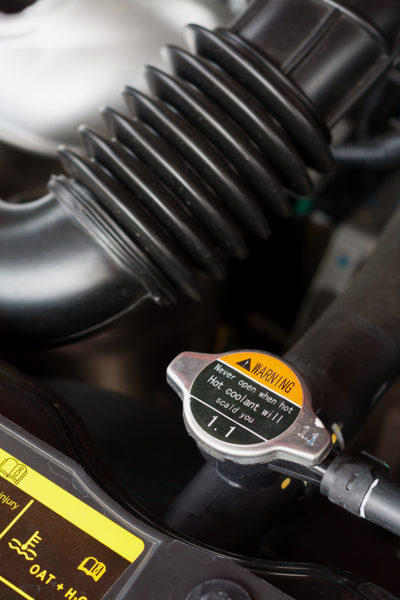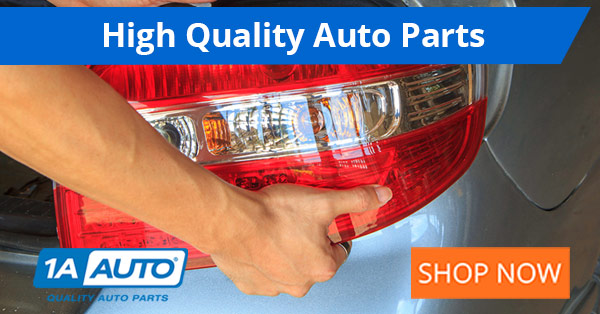What to Do When Your Car Overheats
How Do I Know If My Engine Is Overheating?
Temperature Gauge:
You’ll notice the needle on your dashboard engine temperature gauge (that’s the one marked with H for hot and C for cold) creeping up.
Plastic or Rubber Smell:
Plastic parts and rubber hoses in your engine bay may give off smells under intense heat.
Bubbling Sound:
A Bubbling sound coming from the engine bay might be a sign of hot, expanding coolant overflowing from the radiator to the coolant tank.
Ticking Sound:
A ticking sound from the engine could indicate that your oil is low, but can also be a sign that your oil is thinned out from overheating.
Steam:
If steam is starting to come out from under your hood, you most likely have an overheating problem.

What Do I Do If My Car Overheats?
Pull Over If You Can:
Ideally you should pull over and turn the engine off to let it cool down.
Proceed With Caution:
Wait at least 30 minutes and let the engine cool down before taking other actions. Steam may come out from under the hood and burn you if you open the hood too soon. If you open the radiator cap during overheating, the hot, high-pressure coolant may also spurt out.
If You’re Stuck in Traffic, Crawl Along:
Using your brakes makes your engine work harder. If you’re in stop-and-go traffic, try and coast along in a low gear. Leaving some space between you and the next car can help.
Turn off the A/C:
The air conditioning puts load on the engine, so you’ll have to turn it off.
At a Dead Stop, Rev the Engine in Neutral or Park:
If you’re completely stuck, put the transmission into neutral or park and rev the engine. The water pump that pushes coolant through the cooling system, and, for some cars, the cooling fan run off the engine. More revs will get the pump and fan spinning.
Crank the Heat:
This may sound counter-intuitive and on a hot day and it won’t be pleasant, but turning on the heat will help cool the engine. Your car’s heating system actually draws heat from the engine and pushes it into the cabin. Running the heater might help draw heat away from the engine. Naturally, you’re going to want to open your windows if you have to drive in summer with the heat on.
Check the Coolant Level If It’s Safe to Do So:
If you’re pulled over, and the engine is cooled off, you can check the coolant level. If the coolant is low, and you have some to add, you might be able to at least drive the car home.
Check the Oil Level:
You might also want to check your oil level at this time. Low oil can also contribute to overheating: less lubrication, more friction, more heat.
Get a Tow:
If you can’t add enough coolant to get you home, or you’re low on oil, driving the car farther might do more damage. In that case, it’s best to have it towed home or to a garage.
What Caused the Car to Overheat?
Check for Leaks:
After your car is parked, check for blue or green fluid leaking underneath your radiator or radiator hoses. Visually inspect the radiator and the coolant tank for leaks. You can also check, with the engine cool, if the radiator hoses feel cracked and brittle, or worn and spongy. Old hoses can also leak coolant. If the radiator, coolant tank, or hoses are leaking, you’ll have to replace the offending part.
Check the Fan:
First, make sure that the fan and the fan shroud aren’t cracked or broken. If the fan and shroud look fine, visually, test the fan motor by bringing the engine up to operating temperature with the hood open. Watch to make sure that the fan turns on. If it doesn’t you may have to replace the fan motor.
Check the Radiator Fins:
The thin metal fins on the outside of the radiator are what disperse heat into the air to cool off the coolant. If the fins are clogged with debris or bent over, they won’t work as well. You may be able to clean debris out of the fins with an air compressor. If the fins are bent over or damaged, you can try to straighten them out with a tool called a radiator comb, but your best bet might be to get a new radiator.
Check the Thermostat:
A failed thermostat is a common cause of overheating. The thermostat’s job is to let coolant flow from the engine to the radiator once the engine has reached its operating temperature. If it gets stuck closed, it will keep the coolant from flowing to the radiator. An easy way to check this is to get the engine up to the operating temperature and put your hand near (but not on) the upper radiator hose. You can also remove the thermostat and test it separately. Put the thermostat into a pot of water and boil it on the stove. The thermostat valve should open once the water is boiling and close as the water cools down. If not, your thermostat is stuck and will need to be replaced.
Check the Radiator Core:
It’s possible for the tubes inside the radiator core to get clogged as well. To check for a clogged radiator, get the engine up to operating temperature and put your hand near (but not on) the lower radiator hose. It should feel warm. If not, coolant might be blocked from coming out of the radiator. A clogged radiator can be flushed out with a special kit.
Check the Water Pump:
A failing water pump is likely to make a whining sound while the engine is running. You can also inspect the water pump (it will be on the front of the engine, but the exact location can vary from one model to another – check your owner’s manual), for leaks. Make sure the water pump pulley isn’t loose or damaged, and that the belt fits tightly to it.
Check for Gasket Problems:
The best way to check the condition of your head gaskets is to check your fluids. If your coolant has turned brown or sludgy, or if your oil looks like a milkshake, then coolant and oil are probably mixing – a sign of a cracked, leaking head gasket, which you’ll have to have replaced. Thick white smoke from the exhaust can also be a sign of a damaged head gasket.

